Portrait of a sea snake banded or yellowlipped sea krait (Laticauda colubrina) ·
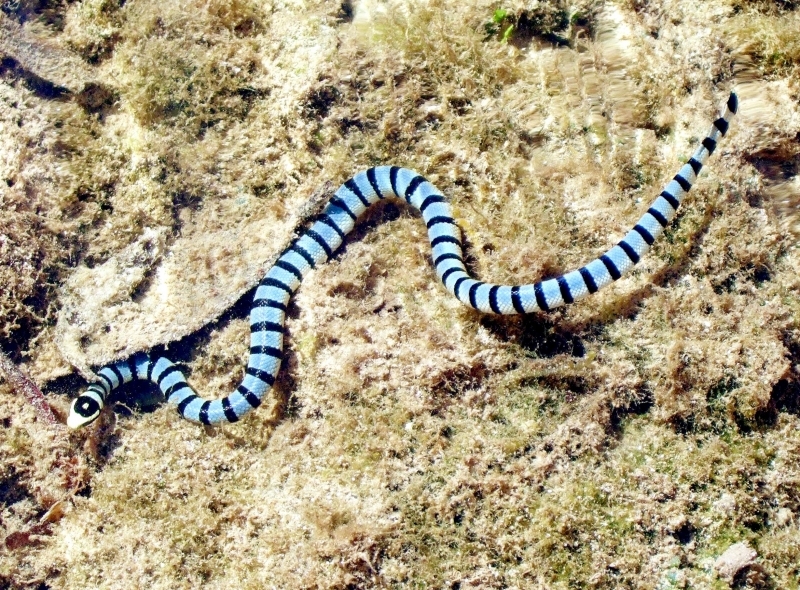
Blackbanded Sea Krait "OCEAN TREASURES" Memorial Library
Laticauda colubrina, also known as banded sea kraits, originated in the region of northern Papua New Guinea. This species of sea krait is the most widely distributed of the Laticauda complex which includes the related species, Laticauda colubrina and Laticauda saintgirosi.
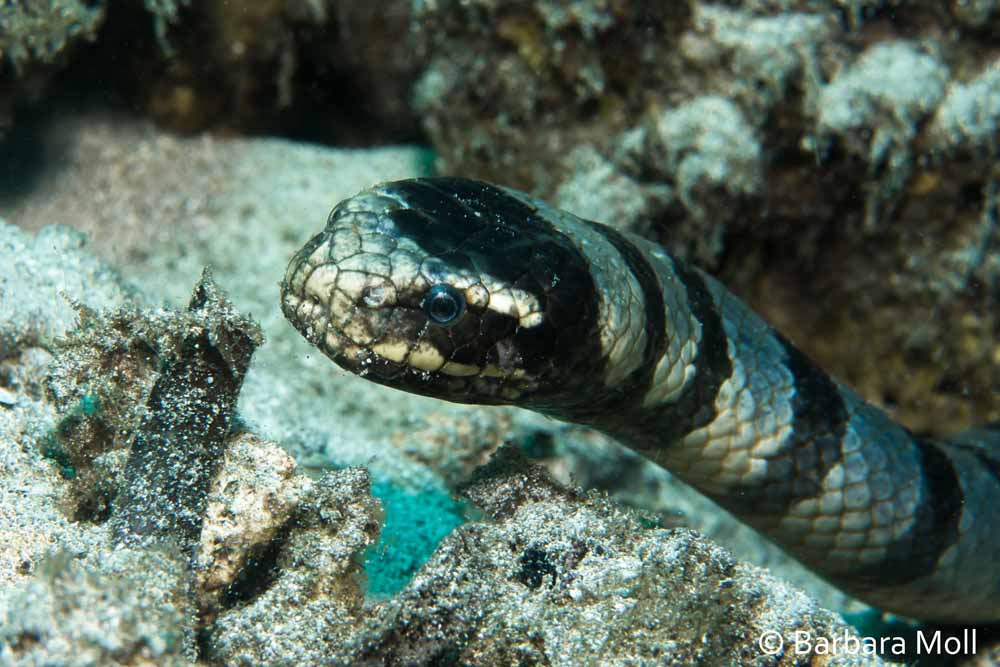
8 Things You Never Knew About Banded Sea Kraits Murex Resorts
Banded Sea Krait Laticauda colubrina While the venom of banded sea kraits ranks among the most toxic in the world, they are so docile and non-aggressive that humans are rarely bitten, even in situations where the animal feels threatened. A male banded sea krait. Credit: Andrew Reitsma SPECIES IN DETAIL | Print full entry Banded Sea Krait
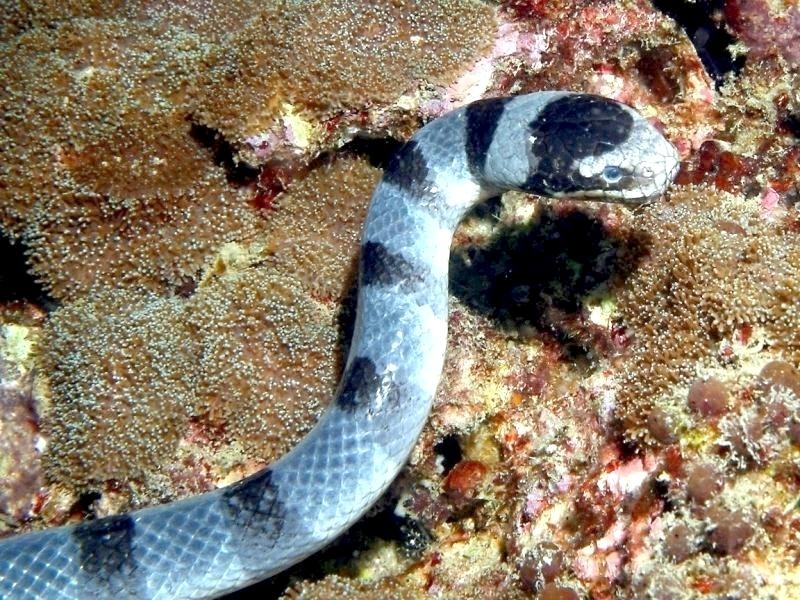
Blackbanded Sea Krait "OCEAN TREASURES" Memorial Library
The banded sea krait is a type of venomous sea snake found in the tropical water of the Indo-Pacific Ocean. Although this snake's venom is ten times more potent than that of a rattlesnake, the animal is nonaggressive and only known to bite in self defense.
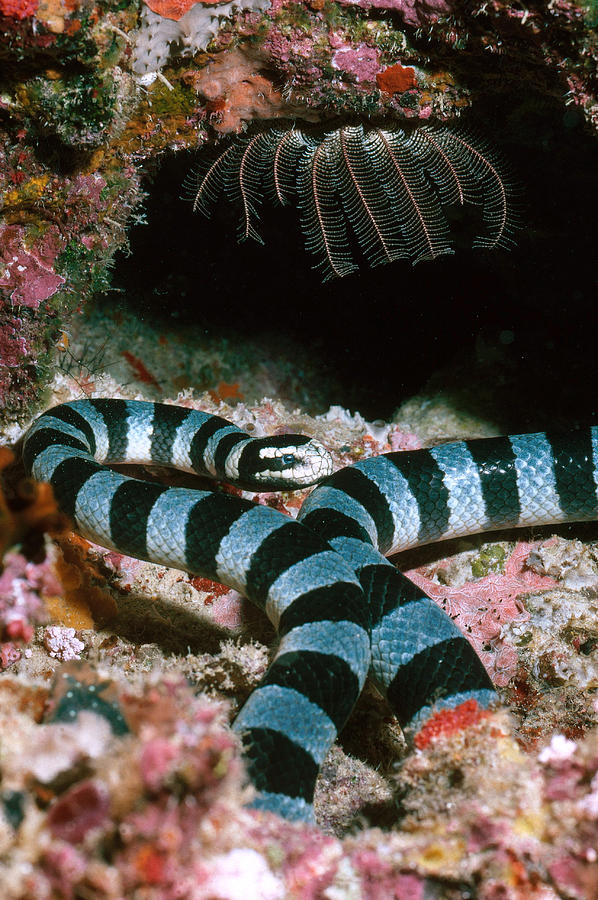
Banded Sea Krait Photograph by FREDERICK R McCONNAUGHEY Fine Art America
The black-banded sea krait ( Laticauda semifasciata ), also known commonly as the Chinese sea snake or erabu, is a species of venomous snake in the subfamily Laticaudinae of the family Elapidae. In Japan it is known as erabu umi hebi ( ja:エラブウミヘビ ), and in Okinawa as the irabu. It is found in much of the western Pacific Ocean .

Banded krait Detailed Information Photos Videos
The Banded Sea Krait, or Laticauda Colubrina, is a small species of sea snake that has some of the deadliest venom in the world. While it spends much more time on land than most other sea snake species, it is an excellent swimmer seen coming in and out of tropical waters and coral reefs in the Indo-Pacific ocean.
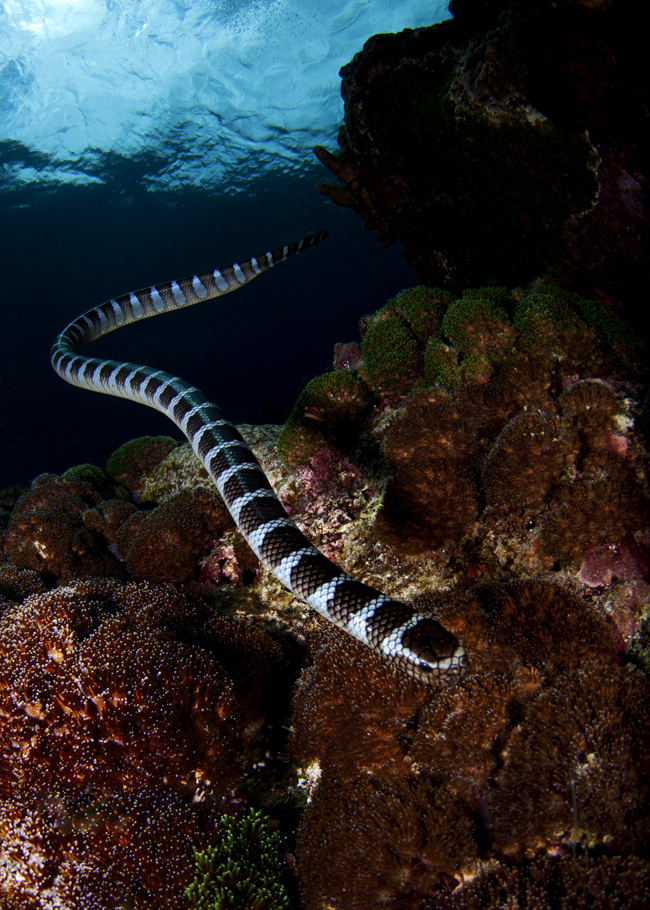
Blackbanded Sea Krait Facts and Pictures
Black-banded sea kraits, numbering in the hundreds, form hunting alliances with yellow goatfish and bluefin trevally, flushing potential prey from narrow crannies in a reef the same way some moray eels do. [11] [12] Sea kraits are capable of diving up to 80 m deep in a single hunting trip. [13]
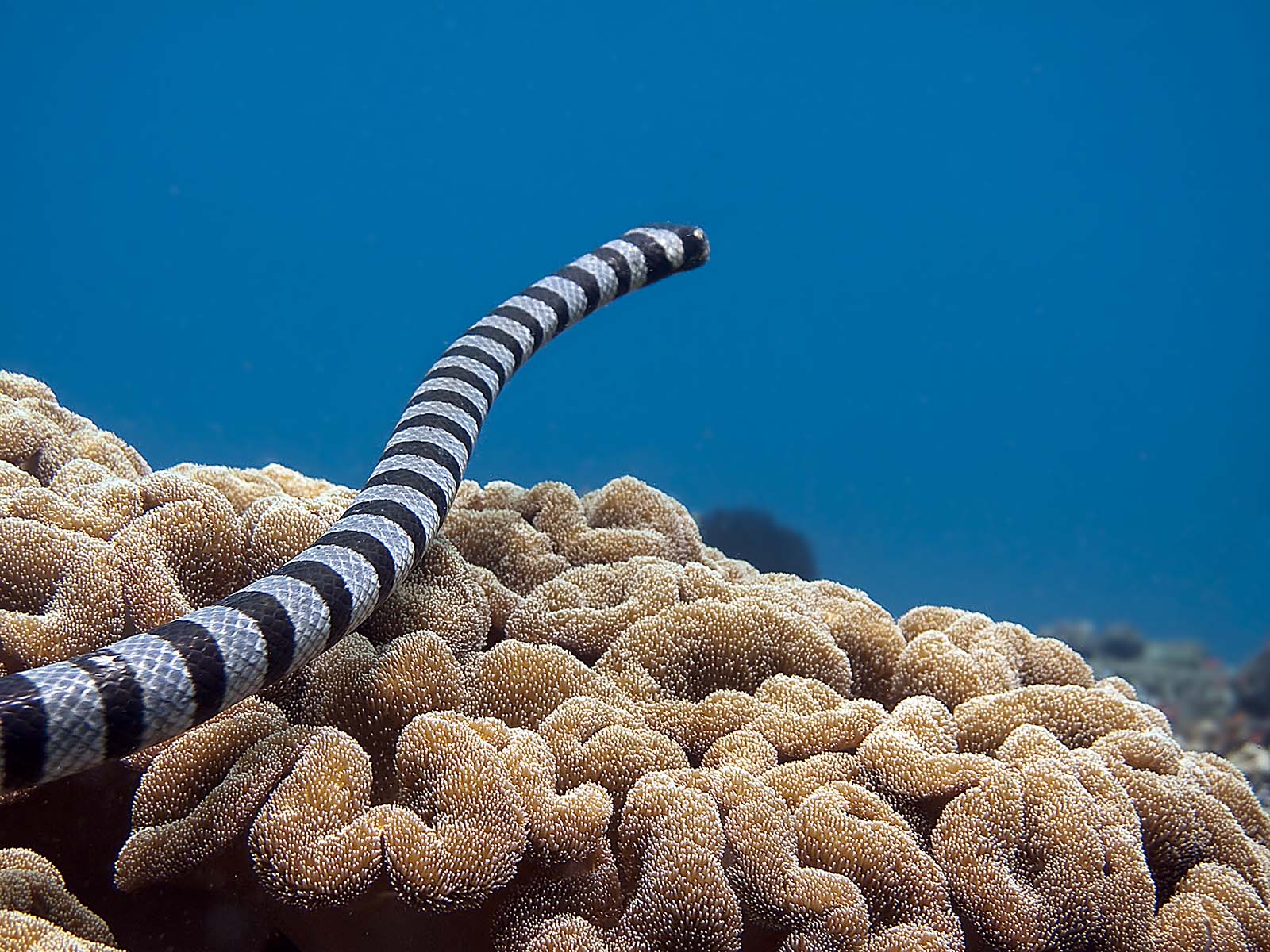
banded sea krait Madang Ples Bilong Mi
The blue-lipped sea krait, also known as the banded sea krait, is a remarkable creature that inhabits the coastal regions of the Indian and Pacific Oceans. With its vibrant blue lips and distinctive color patterns, this unique species of sea snake has captured the fascination of both scientists and nature enthusiasts alike.

Banded Sea Krait Photograph by Scubazoo/science Photo Library Pixels
The Banded Sea Krait, or Laticauda colubrina, is best known for its potent venom and striking bands around its body. This small, semi-aquatic sea krait is found in the Indo-Pacific tropical waters, often in or near the coral reefs off of small islands.
Banded Sea Krait (Laticauda colubrina), Fiji. [OC] [1836 x 2448] r/AnimalPorn
The banded sea krait's venom is very poisonous —it is ten times more toxic than a rattlesnake's venom. When they hunt, they paralyze their prey with their venom and then swallow prey whole. But.

Life of Blackbanded Sea Krait Life of Sea
The Banded krait ( Bungarus fasciatus) is the largest species of kraits, with a maximum length up to 2.7 m (8 ft 10 in). Although the banded krait is venomous and its bite may be deadly to humans, it is shy, primarily nocturnal, and not particularly aggressive so its overall risk to humans is low. No Nocturnal Ca Carnivore Te Terrestrial Pr
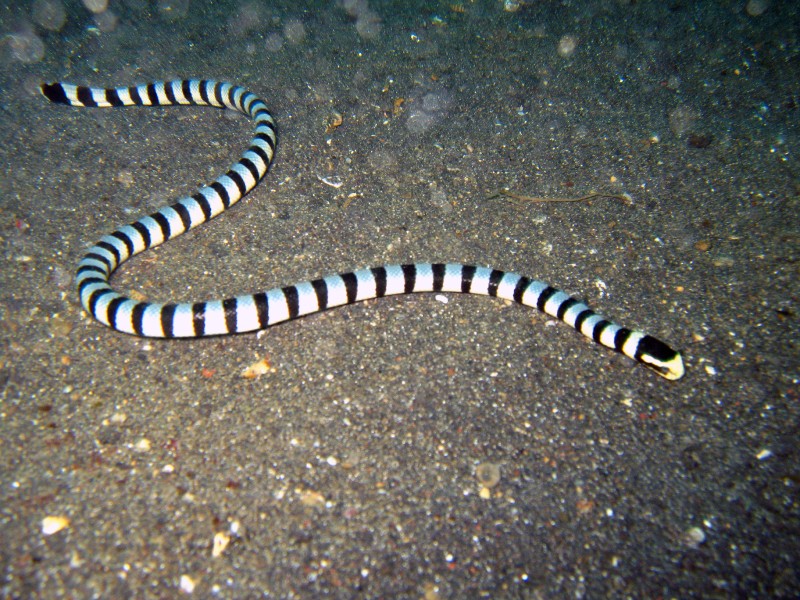
Black Banded Sea Krait l Remarkable Our Breathing
The banded krait ( Bungarus fasciatus) is a species of elapids endemic to Asia, from Indian Subcontinent through Southeast Asia to Southern China. [1] [2] [3] With a maximum length exceeding 2 m (6 ft 7 in), it is the longest krait with a distinguishable gold and black pattern. [4]

bluebanded sea krait laticauda laticaudata india to western pacific alternative names blue
Banded Krait Facts Prey Some of their favorite food includes rat snakes, sunbeam snakes, rainbow water snakes, and cat snakes. They also consume fish, skinks, frogs, and eggs.
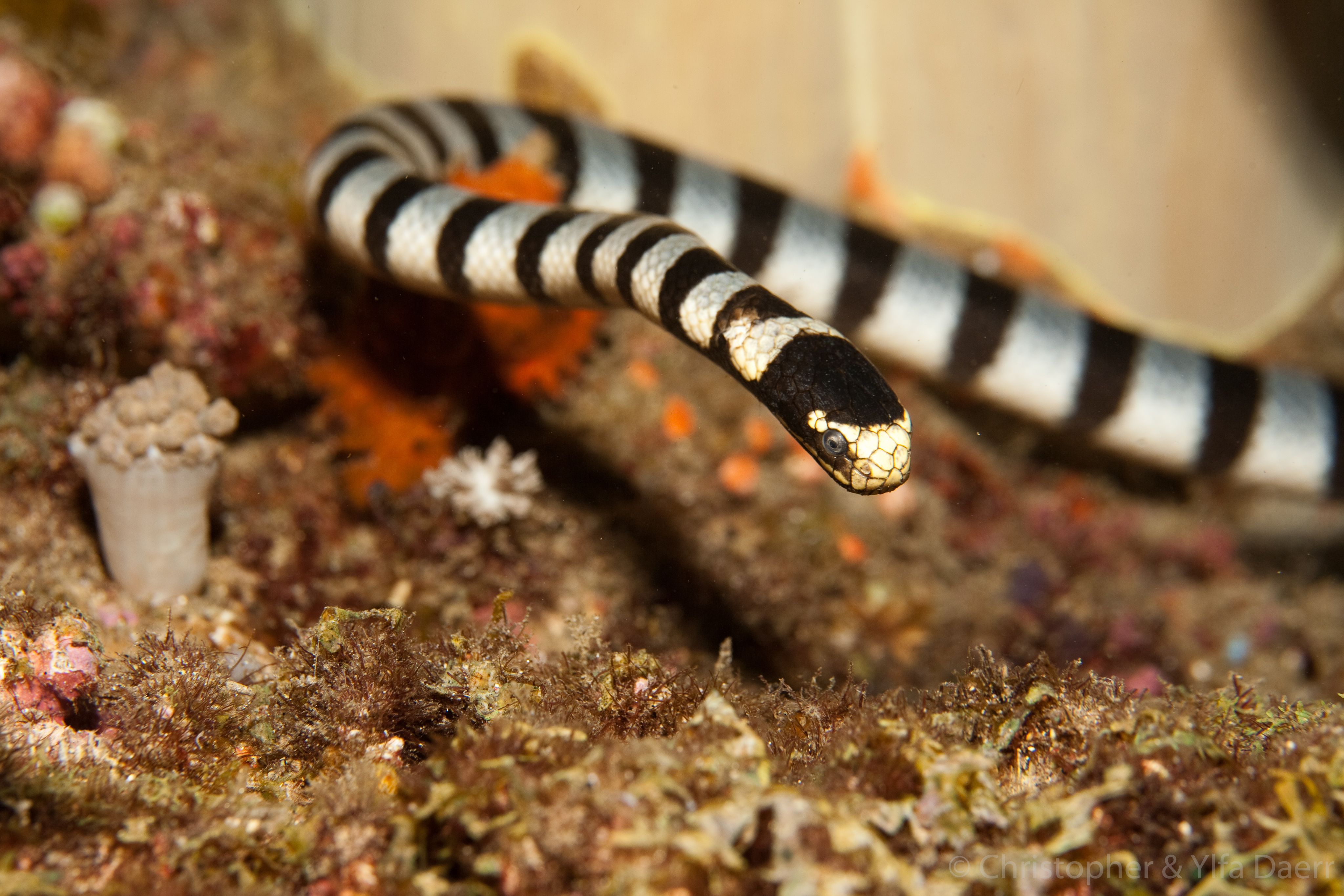
Portrait of a sea snake banded or yellowlipped sea krait (Laticauda colubrina) ·
The yellow-lipped sea krait, also called the banded sea krait or colubrine sea krait, is a venomous snake occurring throughout the eastern Indian Ocean and Western Pacific. It has the widest distribution of all sea snakes in its region. This species was first described in 1799 as Hydrus colubrinus.
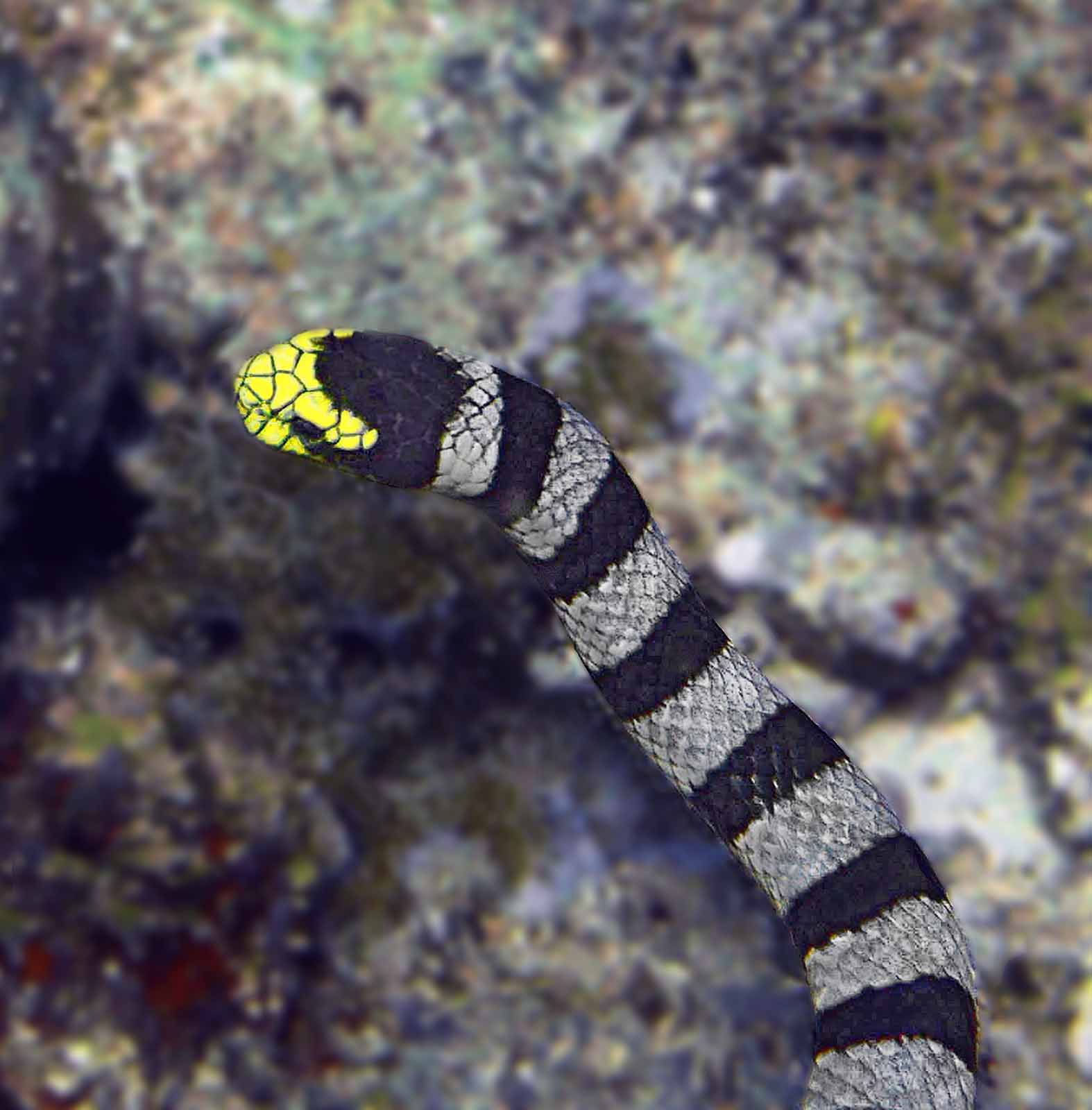
banded sea krait Madang Ples Bilong Mi
yellow-lipped sea kraitLaticauda colubrina ), also known as the banded sea kraitcolubrine sea krait, is a species of venomous sea snake found in tropical Indo-Pacific oceanic waters. The snake has distinctive black stripes and a yellow snout, with a paddle-like tail for use in swimming.
/a-banded-sea-krait-641558292-5b608214c9e77c0050e9eb50.jpg)
Banded Sea Krait Facts (Laticauda colubrina)
1. Five Names For One Species: Banded Sea Krait While most people call this species the "banded sea krait", it is also known as the "banded sea snake" or the "yellow-lipped sea krait". It also has its scientific species name which is "Laticauda colubrine" which has given rise to yet another common name "colubrine sea krait".
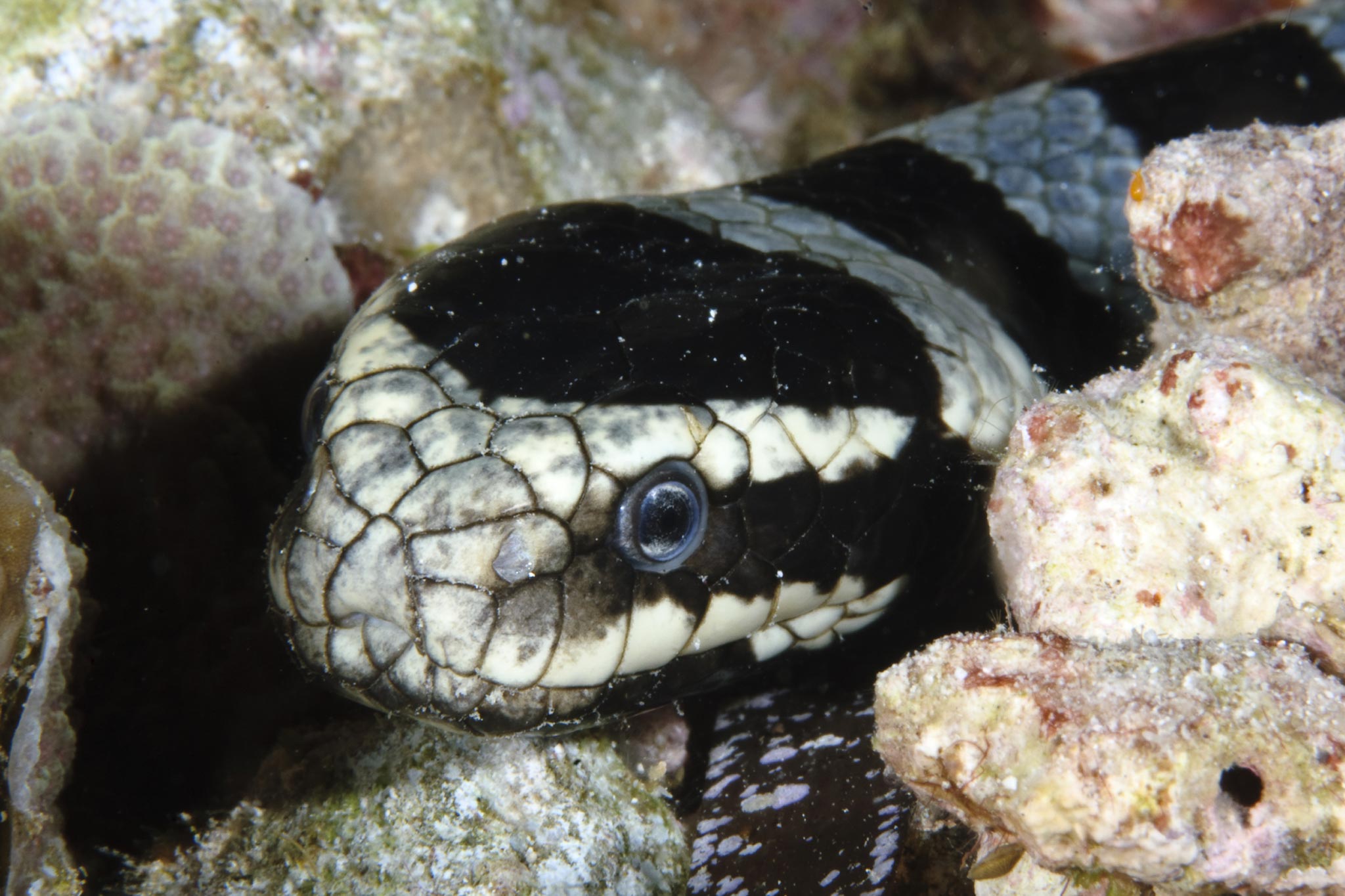
The Beautiful Banded Sea Krait • Scuba Diver Life
Banded Sea Kraits belong to the family Elapidae, which also includes many other species of venomous snakes such as cobras and mambas. Their scientific name is Laticauda colubrina and it's one of the two known species in the genus Laticauda. The sea krait family, also known as Laticaudidae, is a small family of venomous sea snakes.